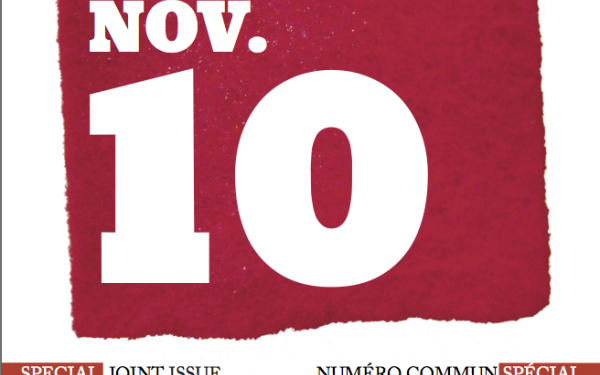Breaking Down the Budget
How the Government Plans to Spend Our “Fair Share”
There are a lot of numbers flying around when it comes to the debate about tuition fees in Quebec right now—numbers like $1,625 and $325 and $850 million.
But what do they actually mean? Before asking an entire province to go on strike against tuition hikes, it’s important to understand what the numbersare saying. What does almost doubling our tuition get students?
In March, the Quebec government released “A Fair and Balanced University Funding Plan,” a document that called for students to pay their “fair share” of education costs.
To “give Quebec the means to fill its ambitions,” the 58-page budget outlined four key goals required to meet university funding needs, “fairly redistribute” the cost of education, ensure accessibility and “introduce performance commitments to improve quality of education.”
Crunching the Numbers
Tuition fees in Quebec have gone through two ice ages. From 1968 to 1991, fees were frozen at just over $500 per year for full time undergraduate students. They rose to $1,630 until 1994, and then remained frozen until 2007.
While restructuring tuition, the government also wants to close the province’s $483 million deficit. To do that, the government plans to raise more money from students and individuals. This arrangement hinges on “access to additional revenue of $850 million in 2016-2017.”
How are they going to spend all this extra cash? The plan details $530 million worth of programs slated to improve the quality of teaching and research.
More Money = Higher Quality?
Meant to keep universities accountable to the government, each school will develop and publish its own targets. In 2014, the province will conduct an in-depth review of the results. If targets have not been reached, the university is required to draft an action plan to help reach these goals… for a second time.The budget also outlined “performance commitments”—five-year agreements between the province and universities that allow Quebec City to oversee how the new money is being spent.
The government expects schools to double donations by 2016 but hasn’t come up with a plan to stimulate fundraising—except to match donations to individual institutions.
The province can only reach its goal of providing universities with $850 million in extra money if $54 million of that comes from donations. For that to happen, universities must increase the amount of donations they receive by eight per cent annually until 2017.
Currently, the government gives universities $0.25 for every dollar donated, up to $1 million per institution, and with a province-wide cap of $10 million. The new plan will eliminate this ceiling.
But according to Fédération étudiante universitaire du Québec President Martine Desjardins, universities in Quebec—and particularly francophone institutions—are already struggling to raise donations.
“When you ask for 20 per cent for each university, you know the big universities can raise that from different groups, but in other regions, you cannot even raise 10 per cent. I think they won’t be able to do it.”
In 2010, Concordia received $8.9 million in donations.
The plan will give $0.50 per dollar to universities with 15,000-plus students and will match smaller universities dollar for dollar. If they fail to reach the eight per cent goal, however, universities only get $0.25 per dollar.
Target Taskmaster
The budget also established the Fonds pour l’excellence et la performance universitaire, a body which is intended to make sure that funds are spent properly and targets are met. With a $160 million mandate to ensure universities raise donations by eight per cent annually, the Fonds has a lot on its plate.
Despite clear purposes to match donations, eliminate deficits and support research excellence, the budget doesn’t detail the body’s administrative costs or explain who will oversee its operations. Without someone to keep an eye on things, how can the province guarantee how student money will be spent?
A Fair and Balanced Plan?
While some features of this budget could benefit students and improve the quality of post-secondary education, many questions remain.
There are questions like why the tuition levels of 1968 were so optimal that we should return to them, questions about who is going to oversee the distribution of funds and questions about what real motivation universities have to make performance deals with the province.
When a budget is drafted that directly affects students and is supposed to help students get a better education, it would not be unreasonable to assume the government would be eager to defend and promote its plan.That is not the case, however. Despite numerous interview requests, the Ministry of Education and Finance Ministry were unwilling to clarify aspects of the budget.
It is your choice to strike on Nov. 10. Consider the numbers and make an informed decision. At the end of the day, are we getting what we are paying for.
—with files from Andrew Brennan

TEST2_900_473_90.jpg)
_600_832_s.png)



1_600_375_90_s_c1.jpg)
2web_600_375_90_s_c1.jpg)